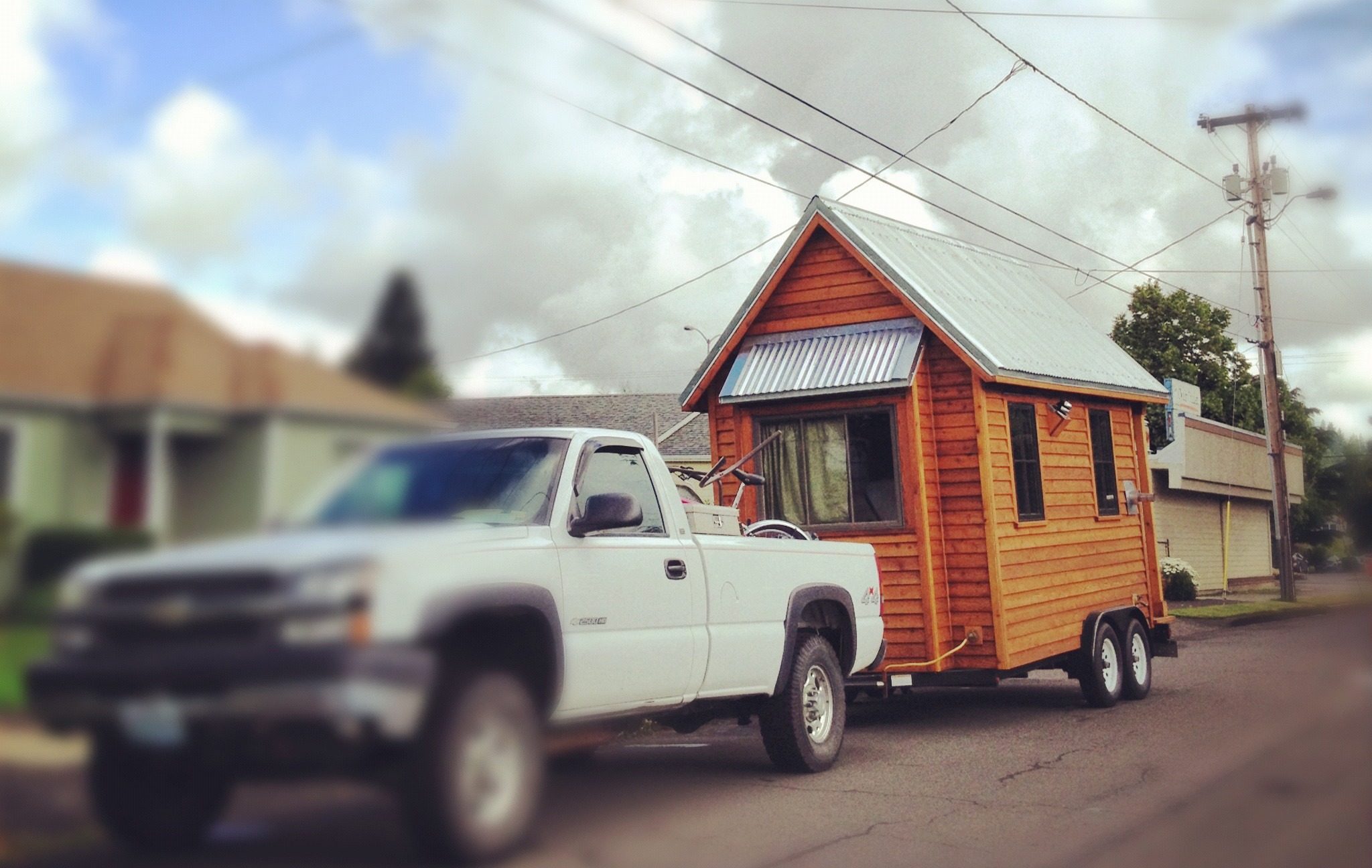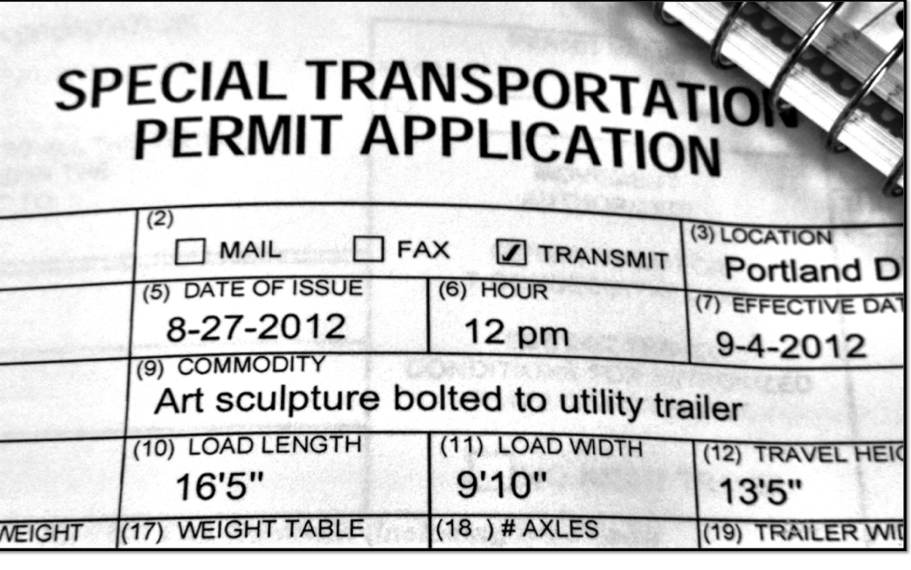
By Dee Williams
How do you make sure your tiny house is “road legal”, and that you have the approval you need to haul it down the street or across the country? We’ve been getting a lot of questions about the “wide” trailers from Iron Eagle – the trailers we recommend for use with our “Sweet Pea” design and the Shelterwise “Cider Box.” These trailers are built so the foundation is 8.5-feet wide, which makes the house just under 10-feet wide at the roof, eave to eave. We’ve been asked if this width is “road legal,” and the answer is YES!
Of course, as it goes with any question of legality, that “YES” has caveats. Before I wander into the weeds and thickets of trailer legality, I want to encourage you to do your own research. Contact your state Department of Motor Vehicles (DMV) and Department of Transportation (DOT) to find out what they think. There are also several online RV resources that provide good information about legal road widths.

Here’s what I’ve learned by contacting several states: they aren’t sure what to call a DIY tiny house. Is it a homemade “travel trailer,” “recreational vehicle,” or a “load fixed to a utility trailer?” Or is it an “art sculpture bolted to a trailer,” as was the case for Tammy and Logan when they moved their tiny house?
The definition makes a difference. In Oregon, for example, if your tiny house is certified as a recreational vehicle, the width restriction of 8.5-feet is measured at the base of the house. The eaves, awnings, side mirrors and other safety equipment are not considered in the measurement as long as they do not extend further than 10-feet. This subtle distinction may hold true regardless of whether or not your house is RV certified.
Tips for Moving a Tiny House
Here are some of the other things to consider for moving your house safely and legally:
- Your state DMV and DOT definitions and rules may not jibe with each other, or from one state to another. So a neat and tidy “road legal” package can be hard to count on without doing research in the state where you live or plan to live.
- If you’re not going to get your house registered as an RV, you may need to get a special trip permit to take it on the road regardless of the width, whether 8-feet, 8.5-feet, or 9.8-feet wide.
- Getting a trip permit for an unregistered travel trailer or something 9.8-feet wide is actually pretty easy and affordable. In most states it costs less than $50 for a one-time move, or for a permit that covers a month of moves. There are restrictions on days of the year that you can move, and some cities may impose additional restrictions, but it might be worth it to make your house ‘road legal’ regardless of where you measure the load.
- If you’re building wider than 10 feet, you’ll need to hop through a lot of hoops, including getting a commercial license, a bond, trail and lead cars, etc. It’s a hassle, but if that’s what you want to do, you can make it work.
- Keep in mind that regardless of how thin you make your house, it is still going to be quite a chore to move it unless you’re an experienced tiny house mover!
In conclusion, I recommend you just contact your local DOT and DMV offices to work out the specifics in your state. The folks I’ve spoken with have been extremely helpful and kind. Be safe, have fun, and go for it!

Comments are closed.